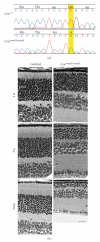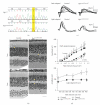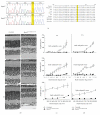Mouse model resources for vision research
- PMID: 21052544
- PMCID: PMC2968714
- DOI: 10.1155/2011/391384
Mouse model resources for vision research
Abstract
The need for mouse models, with their well-developed genetics and similarity to human physiology and anatomy, is clear and their central role in furthering our understanding of human disease is readily apparent in the literature. Mice carrying mutations that alter developmental pathways or cellular function provide model systems for analyzing defects in comparable human disorders and for testing therapeutic strategies. Mutant mice also provide reproducible, experimental systems for elucidating pathways of normal development and function. Two programs, the Eye Mutant Resource and the Translational Vision Research Models, focused on providing such models to the vision research community are described herein. Over 100 mutant lines from the Eye Mutant Resource and 60 mutant lines from the Translational Vision Research Models have been developed. The ocular diseases of the mutant lines include a wide range of phenotypes, including cataracts, retinal dysplasia and degeneration, and abnormal blood vessel formation. The mutations in disease genes have been mapped and in some cases identified by direct sequencing. Here, we report 3 novel alleles of Crx(tvrm65), Rp1(tvrm64), and Rpe65(tvrm148) as successful examples of the TVRM program, that closely resemble previously reported knockout models.
Figures




References
-
- Chang B, Hawes N, Davisson M, Heckenlively J. Mouse models of RP. In: Tombran-Tink J, Barnstable C, editors. Retinal Degenerations: Biology, Diagnostics, and Therapeutics. The Human Press; 2007. pp. 149–164.
-
- Hawes NL, Smith RS, Chang B, Davisson M, Heckenlively JR, John SW. Mouse fundus photography and angiography: a catalogue of normal and mutant phenotypes. Molecular Vision. 1999;5:p. 22. - PubMed
-
- Wang W-H, Millar JC, Pang I-H, Wax MB, Clark AF. Noninvasive measurement of rodent intraocular pressure with a rebound tonometer. Investigative Ophthalmology and Visual Science. 2005;46(12):4617–4621. - PubMed
-
- Nusslein-Volhard C, Wieschaus E. Mutations affecting segment number and polarity in Drosophila. Nature. 1980;287(5785):795–801. - PubMed
-
- Kuwabara PE. Worming your way through the genome. Trends in Genetics. 1997;13(11):455–460. - PubMed
Grants and funding
LinkOut - more resources
Full Text Sources
Molecular Biology Databases

